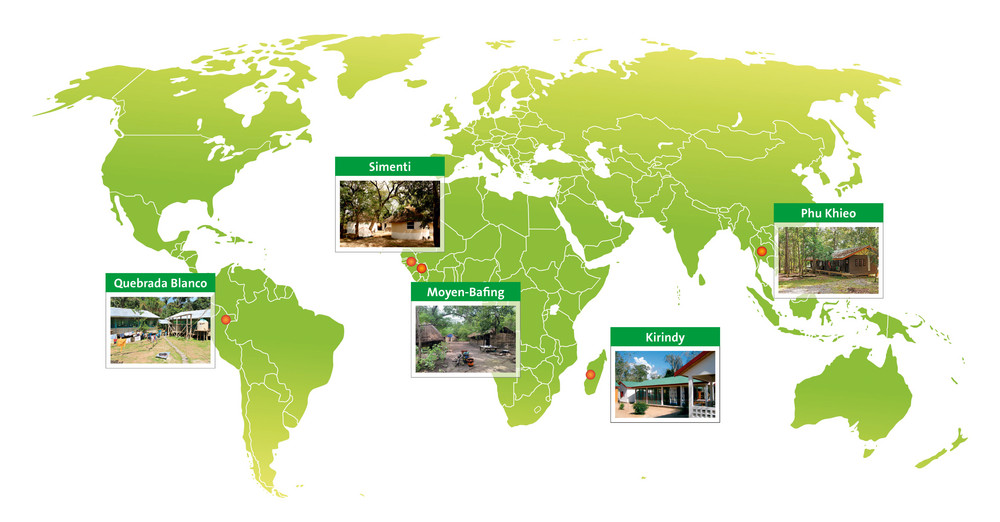Field stations of the DPZ
The DPZ conducts field research on three continents. In Peru, South America, tamarins are studied. In Africa research is done on baboons and chimpanzees, and in Madagascar on lemures. In Southeast Asia, Assame macaques are studied.
The DPZ maintains field stations in Peru, Senegal, Northern Guinea, Madagascar and Thailand. The researchers study the behavior, the habitat, and the ecology of different primate species in these regions. Additionally, they investigate genetic relationships within or between primate species. In total, 18 new species were discovered by DPZ researchers at the field stations. The DPZ conducts research projects on Old and New World monkeys and lemurs in close co-operation with international and local institutions (Federal Agencies, Nature Conservation Organizations, and Universities) on three continents. This research not only improves the knowledge about our closest relatives, but it might also contribute to a better understanding of our own evolution.
Primates, except for humans, are mostly native to species-rich tropical and subtropical regions (Biodiversity Hotspots). Many of these regions are among the areas with the highest biodiversity in general. The biota of these regions is dramatically endangered, because those species are restricted to very few spots on this planet.
More than three-fourths of these regions are located in South America, Africa and the Asian Pacific - where the DPZ research stations are also located (except Asia). Many of the primate species that we investigate depend on those unique habitats.
In order to not only investigate but also protect the unique habitats they are working in, the scientists work closely together with the local population and institutions like authorities or universities. All our research stations do therefore support the training of students, game wardens, and field assistants to raise local people's awareness for the nature they live in. The research teams also target poaching and pollution by initiating waste management programs and taking care of animals hurt by traps.
The DPZ field station Kirindy Forest is located on the insular state Madagascar, one of the most important Biodiversity Hotspots in the world. Madagascar is the home of many species that are found nowhere else on this planet. This also applies for the lemurs (Lemuriformes), a partial order of the primates.
The Estación Biológica Quebrada Blanco in Peru is located at the most watery river of the world - the Amazon. It supplies almost the entire South American continent with fresh water and creates a unique living environment. The rain forest along its banks is the habitat of many New World monkeys (Platyrrhini).
The Centre de Recherche de Primatologie Simenti is located within the largest national park of West Africa - the Niokolo Koba National Park. The gallery forests along the Gambia River are home to large groups of Guinea baboons.
The research station Moyen-Bafing is located in a mountainous savanna region in Northern Guinea. It was established in 2022 to study the life history, ecology, and behavior of chimpanzees living in a unique arid environment.
The research station Phu Khieo Wildlife Sanctuary (PKWS) is located in northeastern Thailand and is part of the Western Isaan Forest Complex, a wooded area on the border to Laos. The scientists are studying there, the social behavior of Assamese macaques.

